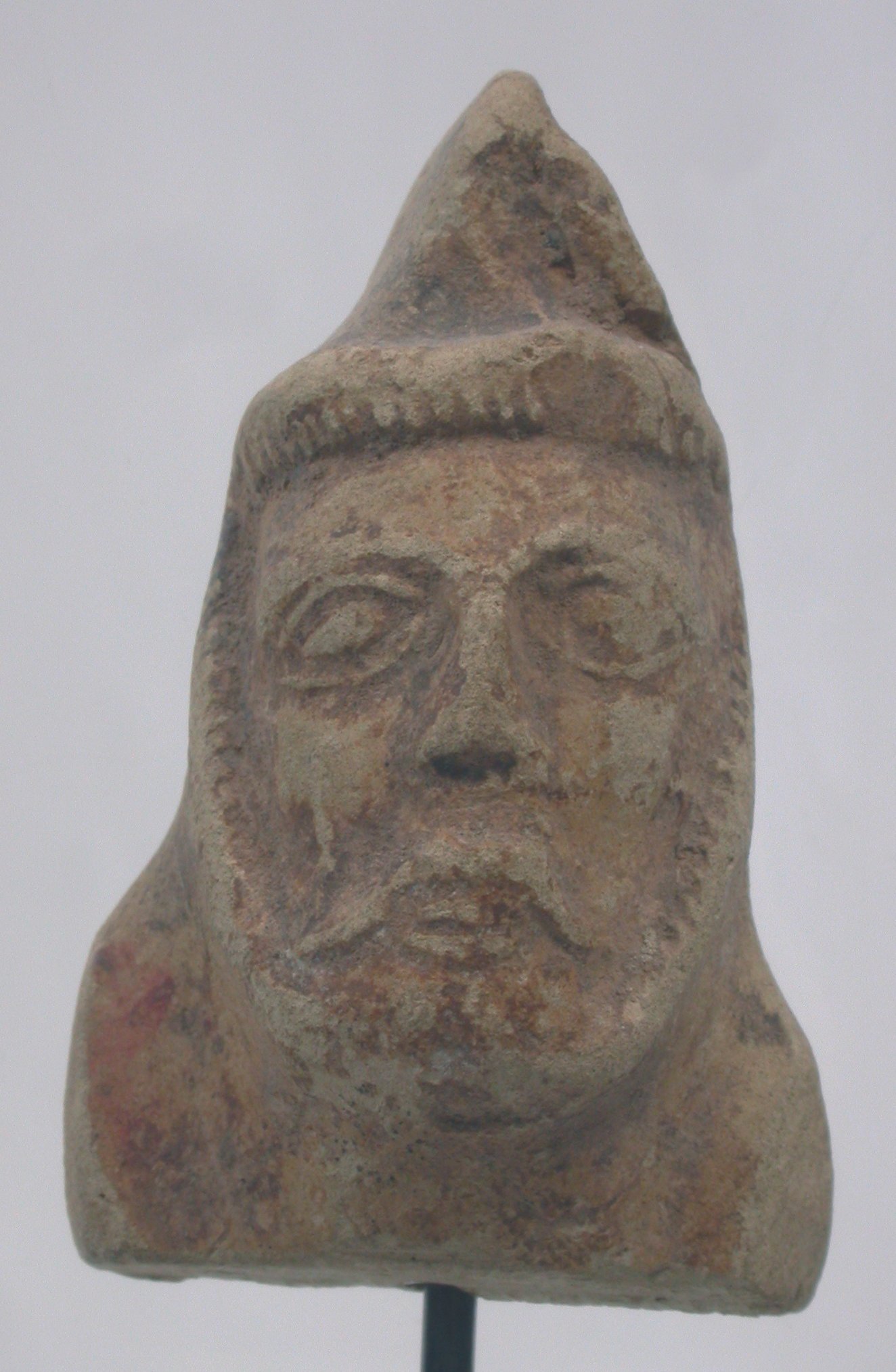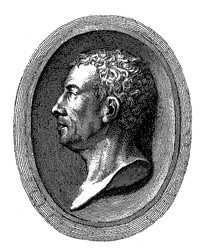Parthisch, vermutlich aus Syrien, 2.-1. Jh. v. Chr.
Der Kopf gehört vermutlich zu einer parthischen Reiterstatuette. Er wirkt kräftig und gedrungen, was noch dadurch unterstrichen wird, daß er ohne ausgeformten Hals auf den Schultern aufsitzt. Das Gesicht ist frontal auf den Betrachter ausgerichtet. Die Augenbrauen, die großen mandelförmigen Augen, die nach innen hochgezogen sind, und der Mund wirken abstrakt und linear. Auch der das Gesicht umgebende Bart und der Schnurrbart sind durch gleichförmige Einkerbungen stilisiert, ebenso wie die unter der Kopfbedeckung hervortretenden Haare. Auf dem Kopf trägt der Krieger eine hohe orientalische Kopfbedeckung, die die Wangen bis zum Ansatz des Bartes und den Hals verhüllt. Sie weist den Reiter als einen angesehenen Orientalen aus.
en

